Amortization Deep Dive: The Rule of 78s
As we talked about previously, there are many reasons why understanding amortization methods is helpful for financial professionals. Today, we’re...
3 min read
 Katrina M. Wilkins
:
June 5, 2023
Katrina M. Wilkins
:
June 5, 2023

We’ve recently made some changes to our documentation for the GOLDAccount Center APIs. These APIs allow your institution’s website or mobile app to communicate with GAC, and we’ve updated the format of the documentation to make it more consistent and easier to use. In this article, I’ll walk you through some of the most important modifications in the documentation.
First things first: You can find the GAC API documentation in the Help Center by going to Resources in the main menu and choosing API Documentation. From there, click the GOLDAccount Center tile.
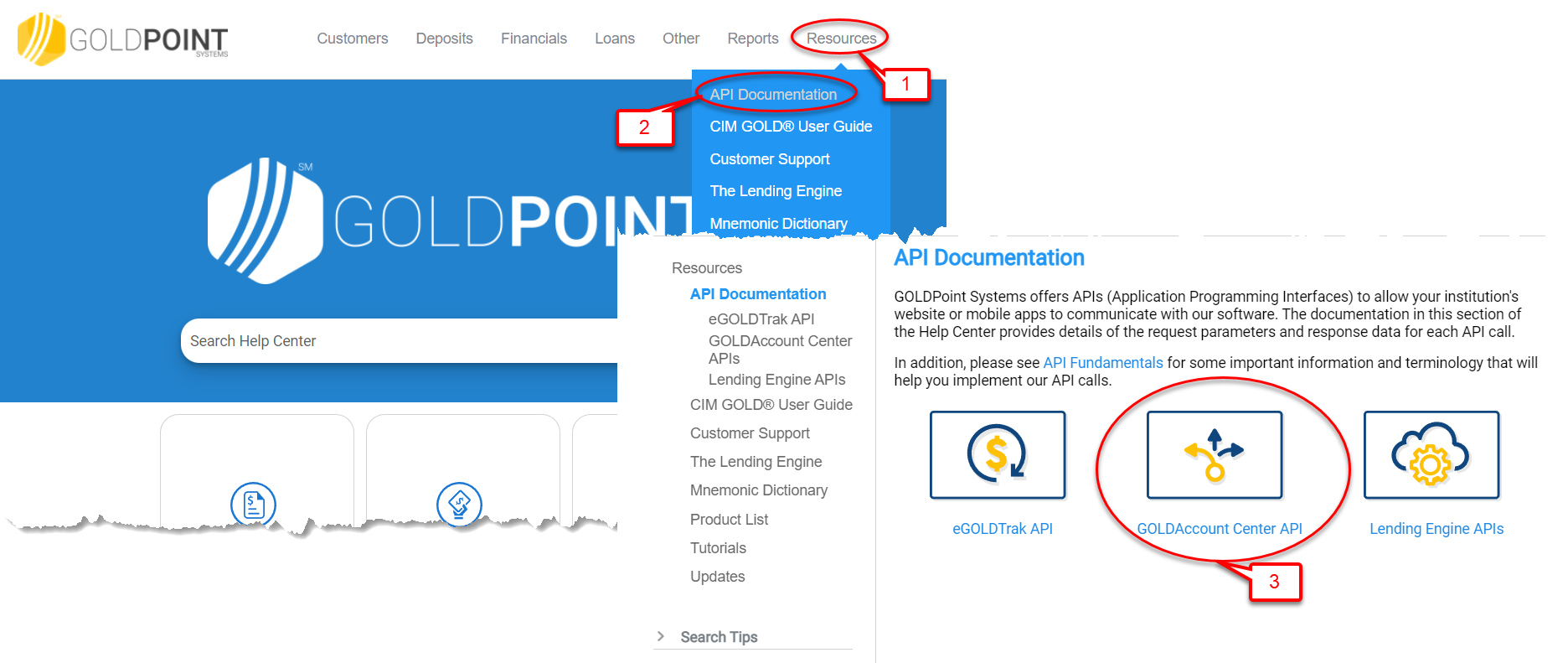
Where to find GAC API documentation in the Help Center
Previously, our documentation for the GOLDAccount Center APIs was kept in a PDF document, which readers (that’s you) had to download to their own computer to read. The new version of the documentation is web-based and hosted directly on the Help Center. That means that you don’t have to download anything—and it’s easier for readers to search for specific information or API calls and easier to follow links to related Help Center topics. Plus, on our end, it’s now easier for the documentation team to make quick updates as needed, so you can rest assured that the documentation you see is as up-to-date as possible.
In our new API documentation, all call methods are color-coded, both on the class introduction pages and on the pages documenting each individual call. (And for the color-blind: Don’t worry—we’ve also included the name of the method in each place, so you’ll still know what you’re getting.)
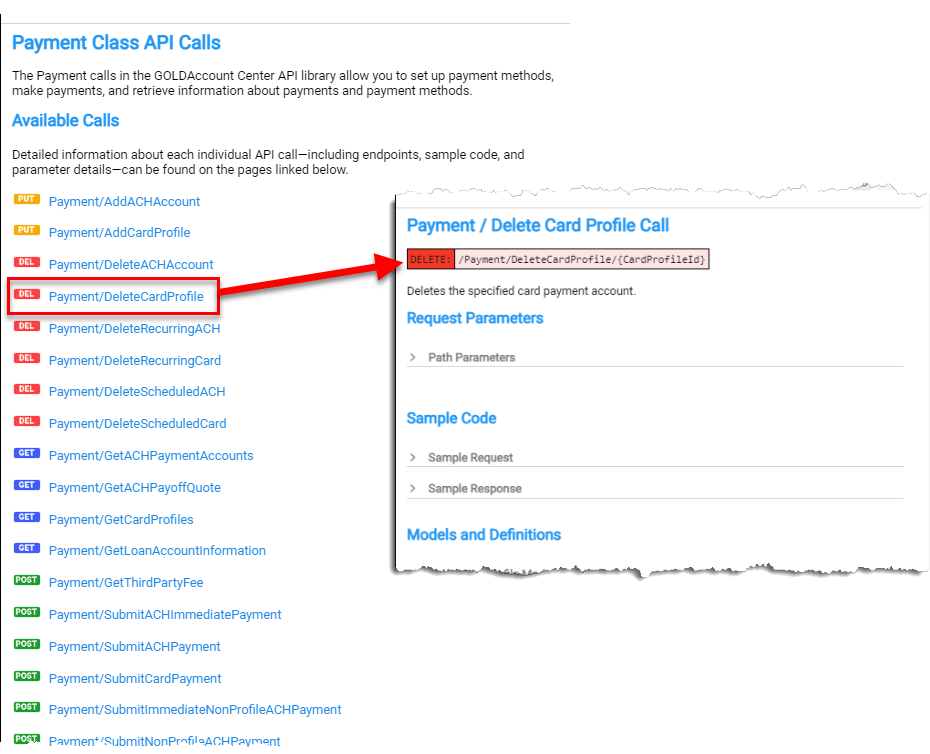
Color-coded methods make it easy to differentiate between API calls on the class page (main) and the call page (inset).
In addition, we have made use of the Help Center’s drop-down feature to keep things nice and tidy on the page. Readers will be able to see at a glance what information is included on each page and can open only those drop-downs with the information they need. For example, if you just need to the values for an enum parameter in the response, you can quickly find the relevant model class without having to scroll through loads of information that’s irrelevant to your current situation.
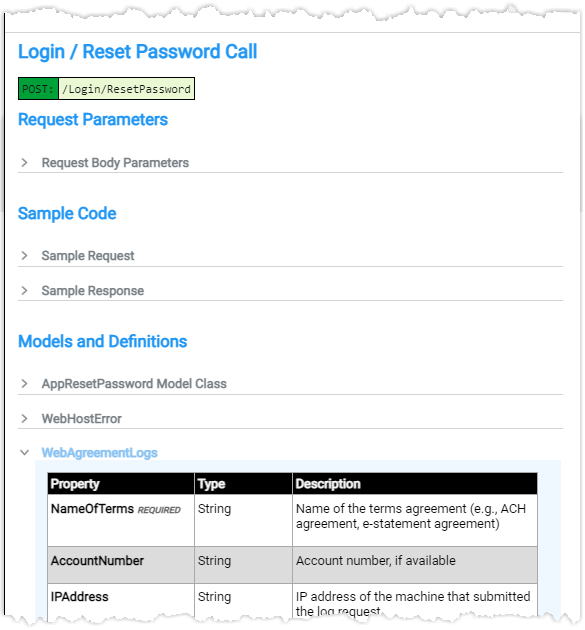
All calls include consistent information, while drop-downs keep the page tidy and easy to use.
We have worked hard to ensure that the new documentation is consistent across all pages. This means that you will know where to look to find the exact information you need. Every page documenting an API call now includes the following information, in this order (see the above image for an example):
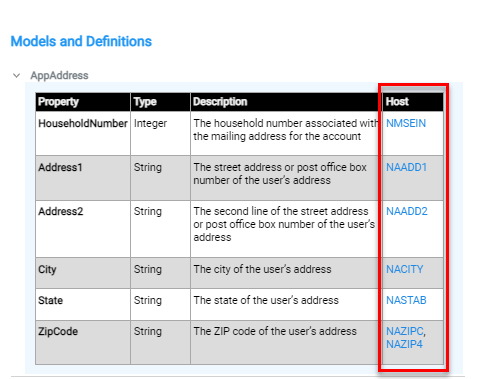
The Host column, when present, provides the mnemonic for any information that is read from or written to the Host when the API is run, along with a link to the relevant documentation in the Mnemonic Dictionary (on Help Center).
In addition, we have been working to ensure that the same information is included for each parameter, including (but not limited to):
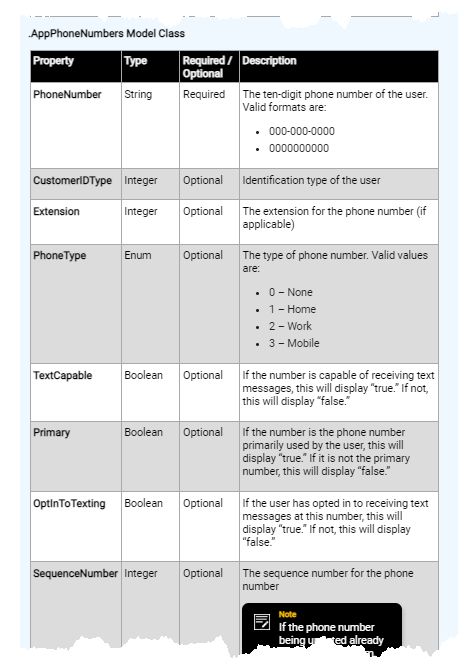
Example of parameter information provided for a Body Request model class.
We’re confident that these modifications to our GOLDAccount Center API documentation will make it easier than ever for you to implement these API calls for your institution’s website and mobile app. We can’t wait for you to start using it!
In fact, we’re so excited about these changes that we will soon be reworking the rest of our API documentation to match this format. So keep an eye out for those updates in the coming months!

As we talked about previously, there are many reasons why understanding amortization methods is helpful for financial professionals. Today, we’re...

In today's digital age, where online banking and electronic communication have become the norm, ensuring the security of financial information is...

If you spend any amount of time looking over GOLDPoint Systems documentation, you’ve probably come across the term GILA Loan once or twice. But what...

This week I’d like to introduce one of our newest products: Global Tables! Global Tables allows you to easily upload, create, and access tables....

1 min read
There’s a new star in our API Library! Find out how the Get Customer By Phone call can increase revenue by saving you time and money. Picture the...

As we talked about previously, there are many reasons why understanding amortization methods is helpful for financial professionals. Today, we’re...